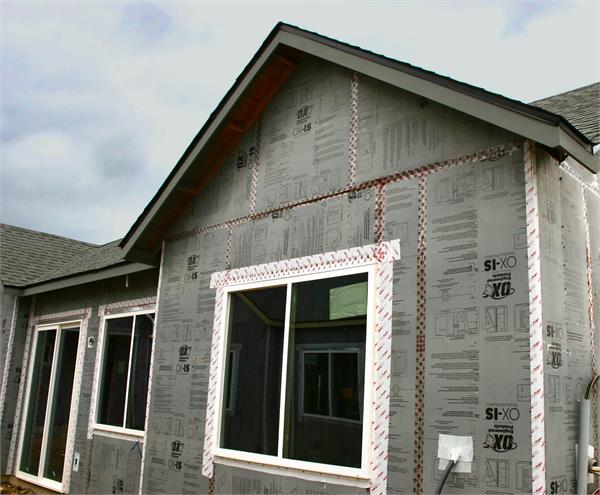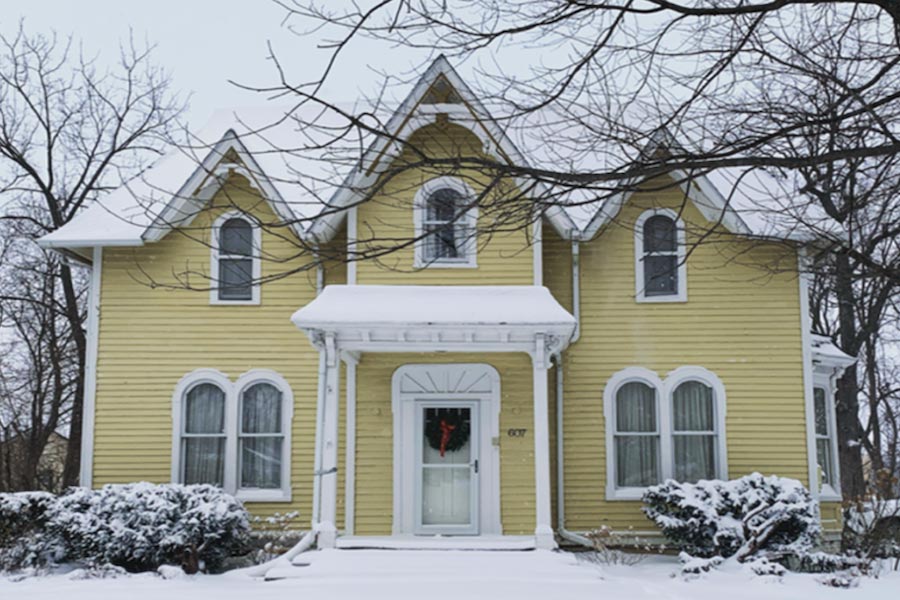Mar 1, 2021
How Continuous Insulation Can Help Meet Energy Codes, Ensure Healthier Homes [Sponsored]
Building code requirements are as stringent as ever, and builders are looking to cutting-edge products as a solution.
By: OX Engineered Products

Building energy codes are becoming more stringent in both residential and commercial construction in an effort to ensure more comfortable, cost-effective, and energy-efficient structures that provide economic and environmental benefits.
The residential and commercial construction sectors each have unique sets of requirements when it comes to meeting the International Energy Conservation Code (IECC) standards, but the overarching goal is the same: To ensure that new buildings and retrofits are designed for the future, moving energy conservation to the forefront of the discussion.
According to the latest version of the IECC, residential and commercial construction codes both put a significant focus on the building envelope, which includes ceilings, walls, windows, floors, and foundations. In addition, the IECC sets specific requirements for insulating R-values that are dependent on climate zone.

Regardless of climate, insulation needs to successfully keep the air inside of your home comfortable. Whether that’s maintaining a warm temperature in the winter or a cool interior environment in the summer, insulation is one of the foremost considerations when constructing a home.
Fulfilling the R-Value Requirement
The International Code Council (ICC) sets minimum requirements for R-value for different parts of the structure including, of course, above-grade walls. These walls are then categorized into four types of wall construction: mass walls; metal building; metal framed; and wood framed and other. The minimum R-value requirement for each type of wall depends on which one of the eight major climate zones in North America the project is located.
All insulating materials have an R-value, but not all R-values are equal. For example, continuous insulation products such as OX-IS provide enhanced R-values because they eliminate thermal bridging. Traditional batt insulation alone, installed between studs, does not address the thermal bridging that occurs through the framing materials.
Regardless of framing method, installing a layer of rigid foam provides an additional means of insulation and helps eliminate thermal loss through the studs. On its own, OX-IS’s polyisocyanurate core can provide and R-value of up to R-9.0.
This illustrates the advantage that builders have when choosing continuous insulation products such as OX-IS. Builders can combine continuous insulation with cavity insulation to achieve an even higher R-value. This additional measure can help their building meet code. In fact, some building scientists predict that exterior insulation may soon be a requirement in some jurisdictions.
Healthy Walls, Healthy Structure
Continuous insulation goes beyond maintaining comfortable interior environments. It is a key component in building healthy walls that maintain their efficacy for decades. These types of walls ensure your home’s longevity, and building the right wall from the start is the first step in keeping costly repairs at a minimum.
For starters, adding exterior insulation to the outer face of the wall moves the dew point from inside of the wall cavity (where it can slowly destroy its structural integrity and serve as a breeding ground for mold) to outside of the sheathing. Unlike OSB, OX-IS does not contain ingredients that are a food source for mold. Utilizing a continuous insulation product such as this dramatically reduces the risk of mold growth and structural rot by eliminating excessive moisture accumulation which can lead to wall failure over time.
All-in-one OX-IS includes all four components necessary for the exterior side of the studs, including:
- Structural sheathing
- Continuous insulation
- An air barrier
- A water-resistive barrier
These layers provide the ultimate defense against the elements.
In addition, because OX-IS features four components in one, builders who use it can significantly reduce jobsite installation timelines and eliminate the potential need to coordinate with multiple trades.
The New Standard
Exterior continuous insulation products are a key component in creating the perfect wall, something that expert building scientist Joseph Lstiburek famously wrote about in 2010. OX-IS delivers all four control layers that Lstiburek described – rain, air, vapor, and thermal – as well as structural strength.
Striving for the perfect wall has set a new standard in wall construction.
Builders – especially those building modern, super-efficient homes – need to meet building code requirements; eliminate thermal bridging; ensure that comfortable interior temperatures are maintained; and provide the necessary control layers to keep walls healthy.
With OX-IS – a singular product – builders are able to fulfill today’s requirements while paving the way for a healthy interior environment for years to come.
To learn more about OX Engineered Products, visit: https://www.oxengineeredproducts.com/





